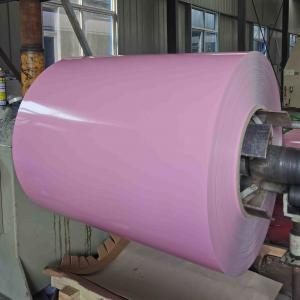

Add to Cart
Lightweight Aluminum Discs Circles for Easy Handling in Cookware Production
Aluminum disks or discs, also known as aluminum circle sheets, are
widely used in the production of cookware. These disks are
typically made from aluminum alloys, such as the 1xxx or 3xxx
series, which are specifically designed for cookware applications.
Here is a description of aluminum disks for the production of
cookware:
Material:
Aluminum disks are made from high-quality aluminum alloys that
offer excellent heat conductivity, durability, and formability.
These alloys are specifically chosen for their suitability in
cookware applications.
Shape and Size:
Aluminum disks are circular in shape, resembling flat plates or
discs. They are available in various sizes and thicknesses to
accommodate different types of cookware, such as pots, pans, and
lids.
Forming and Cutting:
Aluminum disks are designed to be easily formed and cut into the
desired shape for specific cookware applications. They can be
stamped, deep drawn, or spun to create the necessary curvature and
dimensions required for the cookware piece.
Heat Conductivity:
Aluminum has exceptional heat conductivity, which allows for
efficient heat distribution and retention during cooking. Aluminum
disks ensure even heat distribution across the surface of the
cookware, resulting in consistent cooking performance.
Lightweight:
Aluminum disks are lightweight compared to other materials commonly
used in cookware production, such as stainless steel or cast iron.
This lightweight nature makes the cookware easier to handle and
maneuver during cooking.
Corrosion Resistance:
Aluminum disks exhibit inherent corrosion resistance, making them
suitable for contact with food and cooking liquids. They are
resistant to rust and do not react with acidic or alkaline
ingredients, ensuring the safety and longevity of the cookware.
Non-Toxic and Food-Grade:
Aluminum is a non-toxic and food-grade material, making it safe for
cooking applications. Aluminum disks used in cookware do not
release any harmful substances or flavors into the food, ensuring
the food's integrity and safety.
Easy to Clean:
Aluminum disks have a smooth and non-porous surface, making them
easy to clean. They are typically resistant to staining and can be
easily wiped or washed after use.
Recyclability:
Aluminum is highly recyclable, and aluminum disks can be recycled
and reused to minimize waste and promote sustainability in the
cookware production process.
Data
| Aluminum in Disk One Side Painted Aluminum Alloy for Production Cookware | |
| Product | Aluminum in Disk |
| Thickness | 0.7mm,0.8mm,1.0mm |
| Diameter | 150-500mm |
| Material | AA1100,AA1060,AA3003 |
| Temper | O |
| Inner Diameter | N/A |
| Color | High glossy blue, High glossy purple, |
| Coating thickness | PE coating |
| PE Paint Coating : Not Less Than 25um | |
| Packing | Export Standard Wooden Pallets |
| Payment Terms | L/C at sight or 30% T/T in advance as deposit |
| MOQ | 1Tons Per Specification |
| Delivery Time | Within 45 Days |
| Loading Port | Shanghai Port |
| Application | Cookware,Pot,Signboard and decoration. |
FAQ
How to Choose Aluminum disk?
When choosing an aluminum disk for cookware production, there are
several factors to consider. Here are some key points to keep in
mind:
Alloy Type: Select an aluminum alloy that is specifically designed for
cookware applications. Common alloys used in cookware production
include the 1xxx and 3xxx series. These alloys offer good
formability, heat conductivity, and corrosion resistance.
Thickness: Consider the desired thickness of the aluminum disk based on the
specific cookware application. Thicker disks provide better
durability and heat retention, while thinner disks offer faster
heat response and lighter weight.
Size and Shape: Determine the required size and shape of the aluminum disk based
on the intended cookware piece. Consider the dimensions and
curvature needed for pots, pans, or lids. The disk should match the
dimensions of the desired cookware item.
Surface Finish: Decide on the desired surface finish for the aluminum disk. It can
be left with a smooth, brushed, or textured surface based on the
desired aesthetic and functional properties. Additionally, some
cookware may have specific surface treatments, such as non-stick
coatings, applied to the aluminum disk.
Heat Conductivity: Consider the heat conductivity properties of the aluminum disk.
Aluminum is known for its excellent heat conductivity, which
ensures even heat distribution during cooking. This property
contributes to better cooking performance and energy efficiency.
Corrosion Resistance: Choose an aluminum disk that offers good corrosion resistance.
This ensures the longevity and durability of the cookware, even
when exposed to acidic or alkaline ingredients.
Quality and Certification: Ensure that the aluminum disk meets quality standards and
certifications relevant to cookware production. Look for reputable
suppliers who provide aluminum disks that comply with food-grade
regulations and industry standards.
Sustainability: Consider the recyclability and environmental impact of the
aluminum disk. Opt for aluminum that is highly recyclable to
support sustainability efforts and minimize waste.
